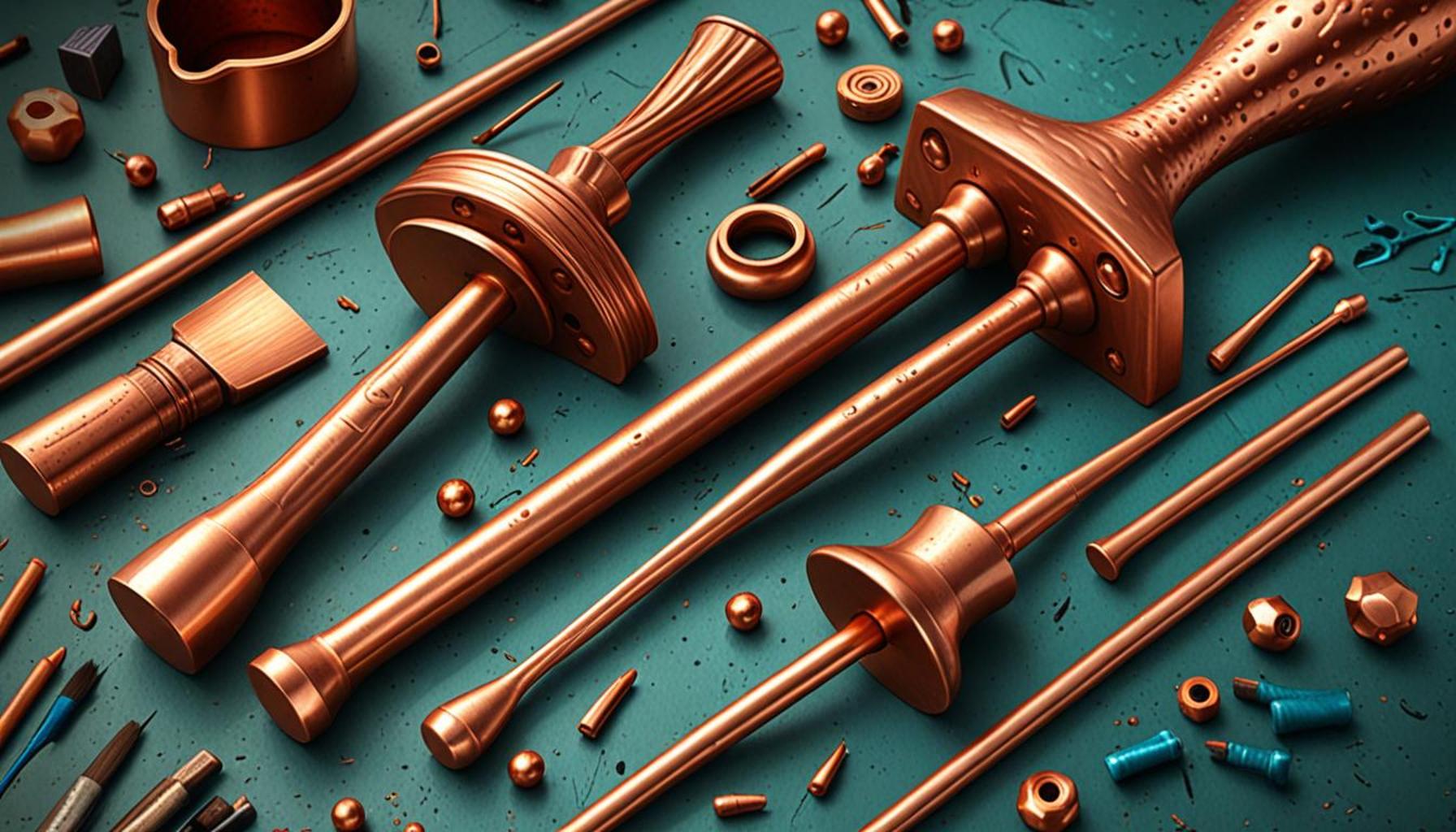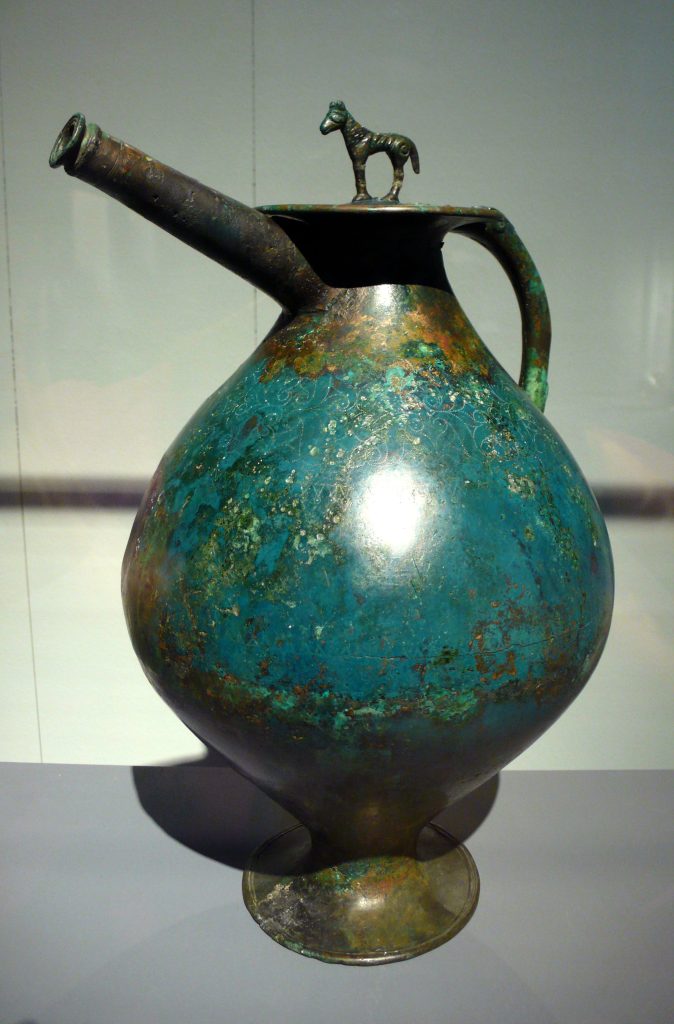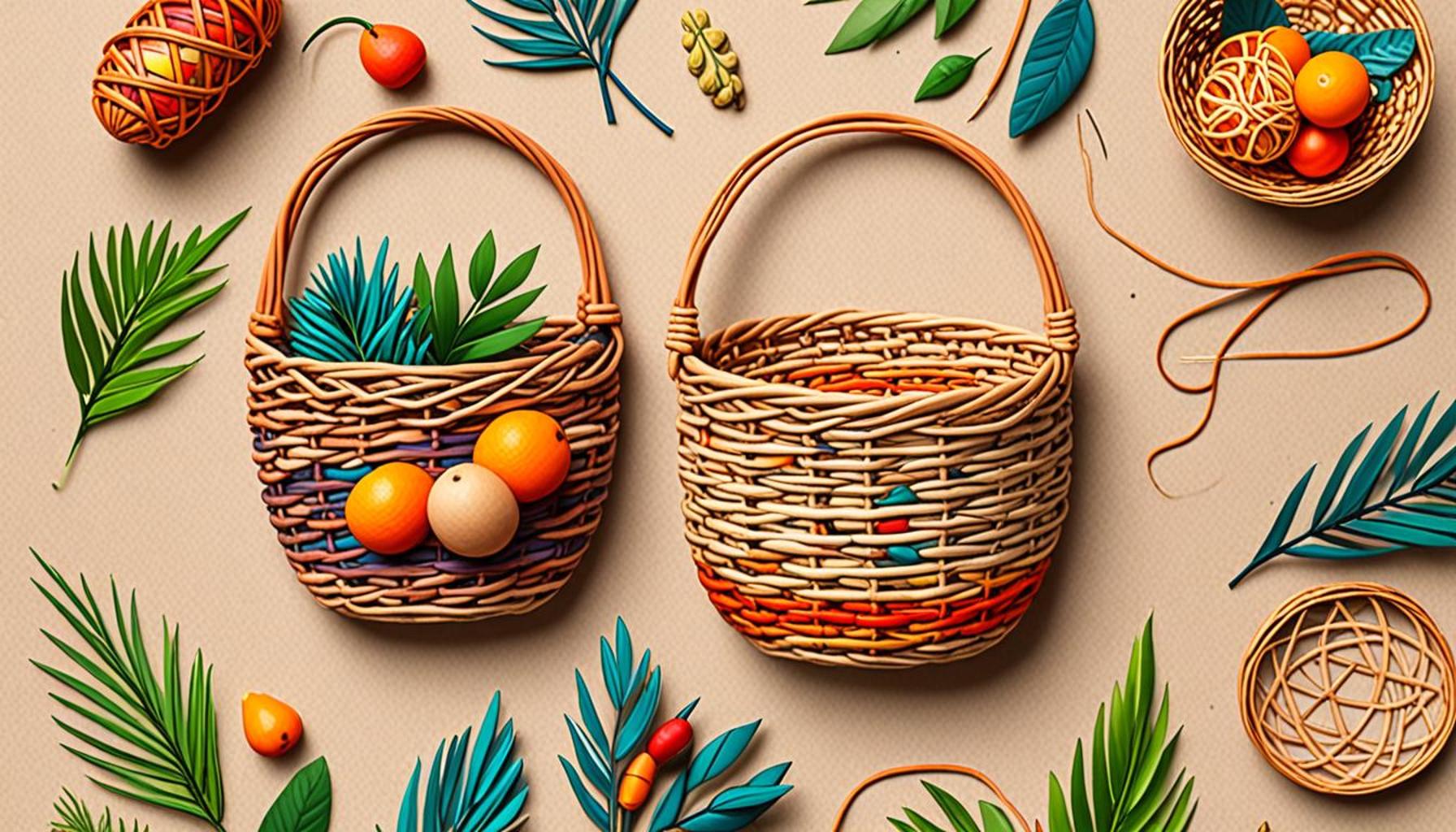The Tradition of Copper Craftsmanship: Hammering and Coating Techniques for Exclusive Pieces

The Allure of Copper Craftsmanship
Copper craftsmanship is a time-honored tradition that captivates artisans and enthusiasts alike. This intricate process of hammering and coating transforms raw sheets of copper into stunning, exclusive pieces that serve both functional and aesthetic purposes. With its rich, warm tones and malleable nature, copper remains a preferred material throughout Nigeria and beyond. From the bustling markets of Lagos to the artisanal workshops in Kano, copper pieces are celebrated for their beauty and practical utility.
The Process Behind the Craft
The artistry of copper crafting involves skilled techniques that have been passed down through generations. These methods not only highlight the physical attributes of copper but also reflect the cultural narratives associated with the craft. The techniques can be broadly categorized into:
- Hammering: This technique involves shaping the copper through a series of precise strikes, often using specialized hammers. Artisans can create intricate textures and forms unique to each piece. For example, some artisans may create decorative bowls adorned with geometric patterns while others may fashion jewelry with organic forms, each approach showcasing the individual’s artistic vision.
- Coating: Applying protective coatings is crucial for enhancing the durability of copper items. These coatings not only protect against oxidation but can also add a unique finish that accentuates the vibrant hues of the metal. For instance, some artisans use lacquer or wax to create a polished sheen, making every work of art truly exclusive, allowing it to shine in both daylight and candlelight.
Every piece tells a story, showcasing the skill and creativity of the craftsman. In Nigeria, the demand for beautifully crafted copper objects—from decorative bowls to intricate jewelry—reflects both cultural significance and personal pride in artistry. Many families pass these items down through generations as heirlooms, intertwining personal histories with tradition.
Exploring Cultural Significance
Understanding the rich heritage surrounding these techniques unveils a world of cultural narratives that are often overlooked. Copper artisans not only contribute to the economy but also play a vital role in preserving age-old traditions. The craft has deep roots in Nigerian culture; historically, copper was utilized by various ethnic groups for ceremonial purposes and as a representation of wealth and status.
By honoring these practices, artisans create a bridge between the past and the future. They invite a new generation to embrace the beauty of copper craftsmanship while instilling a sense of cultural pride. Workshops and exhibitions are increasingly common, wherein aspiring craftsmen learn the trade from seasoned professionals, ensuring that this exquisite art form continues to thrive. As communities recognize the importance of retaining their cultural heritage, the appreciation for copper craftsmanship only grows stronger, drawing interest from locals and international audiences alike.

RECOMMENDED: Check out this similar article
The Art of Hammering: Shaping Copper into Unique Forms
At the heart of copper craftsmanship lies the hammering technique, a process that requires not only physical strength but also a refined sense of artistry and precision. Artisans begin their work with flat sheets of copper, preparing to mold them into distinctive shapes through rhythmical hammer blows. This technique, essential to the creation of exclusive pieces, involves various tools that each serve a specific purpose. The experienced craftsman carefully selects hammers that range from lightweight to heavy, depending on the desired outcome.
Each strike is methodically placed, allowing the artisan to breathe life into the metal. As the copper is hit, it expands and stretches, forming intricate patterns that reflect the artisan’s vision. Some crafters use texturing hammers that imprint beautiful designs, while others may opt for smooth-faced hammers that provide a polished finish. The choice of technique often depends on the type of piece being created. Decorative plates, for instance, may showcase elaborate motifs, while utensils, such as ladles or pots, benefit from a simpler aesthetic that emphasizes functionality.
Mastering the Coating Techniques
While hammering is crucial for shaping, the coating process plays an equally important role in enhancing the final product’s appearance and longevity. Coating not only protects copper items from tarnishing due to oxidation but also adds a layer of visual intrigue. Various methods and materials are employed during this phase, such as:
- Lacquering: This method involves applying a clear protective layer that locks in the copper’s beautiful hues while providing a glossy finish.
- Waxing: Beeswax or paraffin wax is often used to create a matte finish that also serves as a protective barrier, suitable for decorative pieces.
- Patination: For artisans looking to achieve unique color effects, treatment with specific chemicals allows the copper to develop a stunning, layered patina that enhances its character.
These coating techniques not only shield the copper from environmental factors but also allow artisans to experiment with an array of finishes, ensuring that each piece remains unique. Whether for a treasured family heirloom or a contemporary art piece, the coating process makes it possible for copper objects to tell their stories through time.
In a society that deeply values craftsmanship, the ability to create and preserve these works of art speaks volumes about the heritage of copper artisans. Their labor not only reinforces cultural identity but also allows for innovation within tradition. As the demand rises for exclusive handcrafted goods, copper craftsmanship remains a vibrant force, attracting attention and admiration both locally and globally.
The Art of Hammering in Copper Craftsmanship
The tradition of copper craftsmanship is deeply rooted in the art of hammering, which plays a critical role in shaping exquisite pieces. Using a variety of tools and techniques, artisans skillfully manipulate the metal, transforming it from a simple sheet into a stunning work of art. Hammering not only reinforces the strength and durability of the copper but also enhances its aesthetic appeal. The resulting textures and patterns created through this meticulous process add a unique character to each piece, making them one-of-a-kind treasures. Moreover, the interaction between the hammer and the metal results in subtle variations that reflect the personality of the artisan. This variability is not just a byproduct; it’s a celebrated aspect of craftsmanship that draws collectors and enthusiasts alike. The beauty of hand-hammered copper lies in the imperfections, as they tell a story of tradition and creativity passed down through generations.
Coating Techniques: Enhancing Beauty and Longevity
Once the copper is shaped, artisans often turn to various coating techniques to protect and enhance the finished product. These coatings serve a dual purpose: they not only preserve the copper’s radiant luster but also guard against tarnishing and corrosion. Techniques such as lacquering or applying a patina are commonly used, each offering a unique finish that highlights the craftsmanship involved. The choice of coating can also influence the visual outcome significantly; a lacquered finish can create a glossy effect, while a patina may impart an antique look, enriching the authenticity of the piece. This careful consideration of materials and methods ensures that each copper artwork is not only beautiful but also enduring. Art collectors and enthusiasts are increasingly appreciating the intricacies of these techniques, recognizing that they reflect a commitment to quality and tradition. The fine balance between beauty and function in copper craftsmanship invites deeper exploration, encouraging enthusiasts to delve into the rich histories and stories behind each exclusive piece.
| Benefits of Hammering | Coating Techniques |
|---|---|
| Strengthens and Shapes | Maintains and Enhances Aesthetic Value |
| Cultural Heritage | Prevention of Tarnishing and Damage |
This intricate dance of hammering and coating results in exclusive pieces that hold both beauty and significance, inviting deeper appreciation and understanding among those who cherish quality craftsmanship.
ADDITIONAL INSIGHTS: Expand your understanding here
Preserving Heritage: The Techniques and Inspirations Behind Copper Craftsmanship
Understanding the depth of copper craftsmanship goes beyond mere techniques; it involves a connection to cultural heritage and the inspirations that drive artisans. In Nigeria, the tradition of copper work can be traced back centuries, often intertwined with historical narratives and artisanal practices passed down through generations. Each piece created by artisans is not just a product but a reflection of their cultural identity and unique storytelling.
Many artisans draw inspiration from their surroundings, incorporating symbols and motifs that resonate with their community. For instance, the intricate designs found in traditional African attire often find their way onto copper items, creating a harmonious blend of textile art and metallurgy. This fusion displays not only technical skill but also an artistic collaboration between different crafts, resulting in pieces that tell vibrant stories of heritage.
Tools of the Trade: Essential Equipment for Artisans
To achieve mastery in the delicate art of copper crafting, one must become familiar with a variety of specialized tools that aid in both hammering and coating processes. Tools such as anvils, pitch bowls, and tongs have critical roles in the shaping of copper. Anvils provide a solid platform for hammering, allowing artisans to work with precision. Pitch bowls, filled with a soft, resin-like compound, are often used as a support base for shaping the metal without creating unnecessary tool marks. Tongs help in handling hot or delicate pieces during the crafting process, ensuring safety and control.
Moreover, the evolution of tools through modern innovations has opened new avenues for artisans. With the introduction of pneumatic hammers and electric drills, some craftspeople have embraced technology without losing sight of traditional methods. The balance of old and new techniques underscores a commitment to quality while adapting to the fast-paced market demands for unique copper creations.
Market Trends: The Growing Popularity of Handcrafted Copper Pieces
There is a growing global appreciation for handmade copper items, with consumers increasingly favoring artisanal craftsmanship over mass-produced goods. This trend is significantly visible in urban centers across Nigeria, where markets dedicated to handmade goods thrive. Artisans often showcase their work at craft fairs and exhibitions, attracting admirers and collectors who value the quality and uniqueness of each piece.
Furthermore, the rise of e-commerce platforms has created new opportunities for artisans to reach a broader audience, allowing them to showcase their skills to an international market. The blend of traditional craftsmanship with modern marketing strategies enables artisans to preserve their heritage while appealing to contemporary tastes. Collections that tell stories rooted in culture can become popular amidst both local and global communities that cherish artistic expression.
As artisans continue to develop their skills and innovate within the craft, the tradition of copper craftsmanship thrives, ensuring that techniques such as hammering and coating remain vital components of this rich cultural legacy. By maintaining a connection to the past while looking towards a promising future, these craftspeople embody the essence of their art, leading to an ever-evolving story woven through time.
CHECK OUT: Click here to explore more
Conclusion: The Enduring Legacy of Copper Craftsmanship
In exploring the tradition of copper craftsmanship, particularly through hammering and coating techniques, we uncover a vibrant tapestry woven with history, culture, and artistry. The skills passed down through generations illustrate not only the technical prowess of artisans but also their deep-seated connection to their cultural roots. Each handcrafted piece serves as a narrative—a visual expression of identity and heritage that resonates with anyone who comes across it.
The fusion of traditional methods with modern technology enables artisans to innovate while preserving the essence of their craft. This balance invigorates the global appreciation for handmade copper goods, allowing them to thrive in a modern marketplace where unique artistry is increasingly sought after. As consumers flock to both local markets and online platforms to discover these exclusive pieces, they contribute to a movement that celebrates authenticity over mass production.
Looking ahead, it is essential for aspiring artisans to embrace their heritage while also pushing the boundaries of their craft. By promoting the rich legacy of copper craftsmanship, we can ensure future generations are inspired to explore and expand upon these time-honored techniques. In this way, the art of copper craftsmanship won’t just endure; it will flourish, continuously adapting to meet the ever-changing landscape of creative expression. As you delve into this captivating world, consider supporting local artisans and uncovering the extraordinary stories behind each unique piece, thus becoming part of the ongoing narrative of copper craftsmanship.


